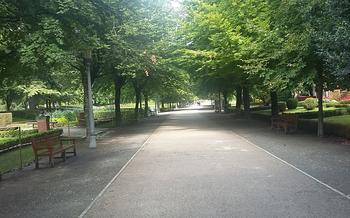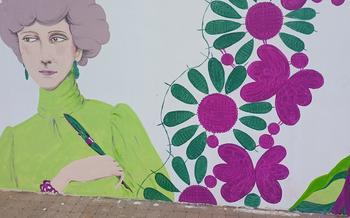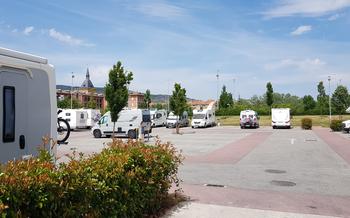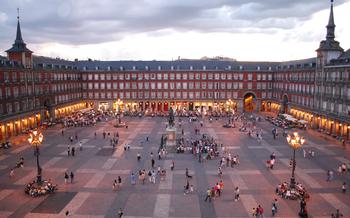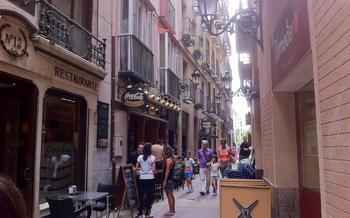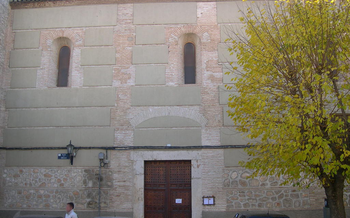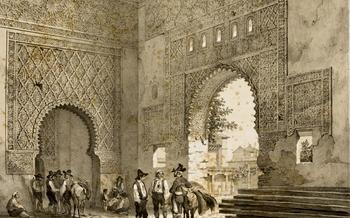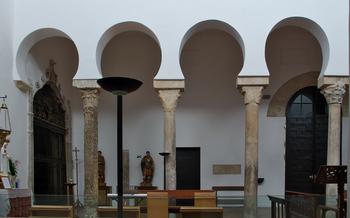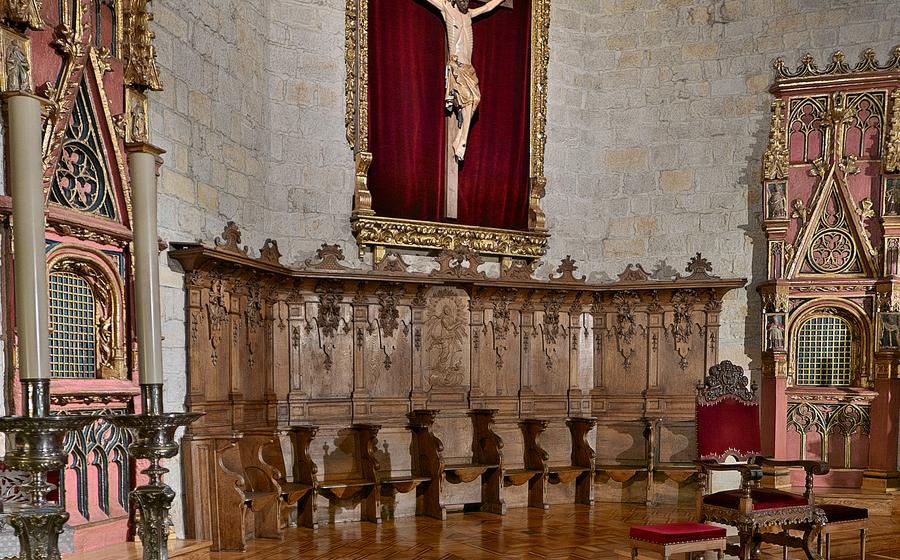
Church of San Nicolás
- The History and Architectural Masterpiece of the Church of San Nicolás
- Location and Accessibility
- Interior Design and Artwork
- Significance in Pamplona's History
- Visiting Hours and Admission Fees
- Religious Services and Masses
- Photography and Videography
- Accessibility for People with Disabilities
- Nearby Attractions
- Local Cuisine and Dining Options
- Souvenirs and Local Crafts
- Language and Communication
- Cultural Etiquette and Customs
- Safety Tips for Tourists
- Insider Tip: Discover the Hidden Chapel of San Fermín
The History and Architectural Masterpiece of the Church of San Nicolás
Nestled in the heart of Pamplona, Spain, the Church of San Nicolás stands as a testament to the city's rich history and architectural prowess. Its Gothic influences blend seamlessly with unique design elements, creating a captivating masterpiece that draws visitors from around the world. Constructed in the 12th century, the church has undergone several renovations and expansions over the centuries, each adding to its grandeur. Today, it stands as a symbol of Pamplona's cultural and religious heritage, inviting visitors to explore its intricate details and marvel at its enduring beauty. The restoration efforts undertaken throughout the years have meticulously preserved its original charm, ensuring that future generations can continue to appreciate its architectural significance.
Location and Accessibility
The Church of San Nicolás is conveniently situated in the heart of Pamplona, Spain, at Calle San Nicolás, 1, 3100Its central location makes it easily accessible on foot, allowing visitors to explore the surrounding historical streets and landmarks. For those arriving by car, there are several parking options nearby, including public parking garages and on-street parking.
To reach the church using public transportation, visitors can take bus lines 4, 9, 10, 11, 12, 15, 16, 17, 21, or 23, which all stop within walking distance. The Paseo Sarasate stop is particularly convenient, located just a short stroll from the church's entrance.
To fully immerse themselves in Pamplona's rich history and culture, visitors can embark on a guided walking tour that includes the Church of San Nicolás. These tours often provide insightful commentary and anecdotes, enhancing the overall experience. Whether exploring independently or joining a guided tour, the Church of San Nicolás is a must-see destination for anyone seeking to unravel the beauty and significance of Pamplona's religious and cultural heritage.
Interior Design and Artwork
The interior of the Church of San Nicolás is a testament to the intricate craftsmanship and artistic mastery of its builders. Every corner is adorned with intricate carvings, frescoes, and paintings that depict scenes from the Bible and the lives of saints. The main altarpiece, a magnificent work of art in its own right, is a focal point of the church's interior. Created in the 16th century, it features a series of intricate panels depicting the life of Jesus Christ. The church also houses several notable paintings by renowned artists, including Francisco de Goya and El Greco. These masterpieces add to the spiritual and artistic significance of the Church of San Nicolás, making it a must-visit destination for art enthusiasts and pilgrims alike.
Significance in Pamplona's History
The Church of San Nicolás holds a significant place in the tapestry of Pamplona's history and cultural heritage. It has witnessed countless events, festivals, and traditions that have shaped the identity of this vibrant city.
One of the most notable events associated with the church is the annual Fiesta de San Fermín, a week-long celebration that takes place every July. During this festival, the church serves as a central gathering point for processions, masses, and other religious ceremonies. The church's imposing facade provides a majestic backdrop to the lively festivities that fill the streets of Pamplona.
Throughout history, the Church of San Nicolás has been a beacon of faith and spirituality for the people of Pamplona. It has played a crucial role in shaping the city's religious traditions and customs. Over the centuries, countless pilgrims and worshippers have sought solace and guidance within its sacred walls.
The church is also deeply intertwined with local legends and folklore. One popular tale tells of a miraculous event that occurred during the construction of the church. According to legend, a statue of the Virgin Mary was found buried on the site, and when it was placed in the church, it began to weep tears of joy. This story has been passed down through generations and continues to be a source of devotion and inspiration for many.
Today, the Church of San Nicolás stands as a testament to the enduring spirit of Pamplona. It embodies the city's rich history, religious traditions, and cultural heritage, making it a must-visit destination for anyone seeking to experience the true essence of Pamplona.
Visiting Hours and Admission Fees
The Church of San Nicolás welcomes visitors with open arms, offering a serene and spiritual ambiance for all who seek it. The church's doors are open to the public from 9:00 am to 1:00 pm and again from 5:00 pm to 8:00 pm every day of the week. During these hours, visitors can freely explore the church's magnificent interior, marvel at its intricate artwork, and find a moment of peace amidst its sacred spaces.
Admission to the church is free of charge, allowing everyone to experience its beauty and spiritual significance without any barriers. Guided tours are available for those who wish to delve deeper into the church's history and architecture, providing insightful commentary and anecdotes that bring the church's story to life. These tours are offered at a modest fee and can be arranged upon request.
The best time to visit the Church of San Nicolás is during the morning hours, when the natural light streams through the stained-glass windows, casting a warm glow on the interior. This is when the church is relatively quiet, offering visitors the chance to fully appreciate its tranquility and grandeur.
Religious Services and Masses
The Church of San Nicolás holds a significant religious position in Pamplona, serving as a sacred space for worship and spiritual contemplation. Devout Catholics and visitors seeking spiritual connection can attend religious services and masses held throughout the week. Masses are typically conducted in Spanish, allowing tourists to immerse themselves in the local language and culture. The church's solemn atmosphere and intricate religious iconography enhance the spiritual experience for attendees. Visitors should dress respectfully and adhere to local customs while attending religious services. Additionally, the church celebrates special ceremonies and events throughout the year, such as feast days, processions, and traditional rituals. These events offer an opportunity for tourists to witness the deeply rooted religious traditions and vibrant faith of the local community.
Photography and Videography
The Church of San Nicolás welcomes visitors to capture the beauty of its interior and exterior through photography and videography. However, it is essential to respect the sacred nature of the space and follow the church's guidelines. Photography and videography are generally permitted for personal use, but commercial photography or videography requires prior permission from the church authorities.
When taking photos or videos, visitors are requested to be mindful of other worshippers and avoid using flash photography, which can be disruptive during religious services. Tripods and large equipment are not allowed inside the church, and visitors should ensure that their camera settings are silent or vibrate to minimize disturbances.
By following these guidelines, visitors can capture lasting memories of their visit to the Church of San Nicolás while respecting its religious significance and preserving its tranquility for all visitors.
Accessibility for People with Disabilities
The Church of San Nicolás is committed to providing a welcoming and inclusive environment for visitors of all abilities. Several accessibility features are in place to ensure that everyone can fully appreciate the church's beauty and spiritual significance.
Wheelchair ramps are available at the main entrance, allowing visitors with mobility impairments to enter the church easily. Inside, the church's spacious layout provides ample room for wheelchairs to navigate. Additionally, there are designated seating areas with wheelchair-accessible pews.
For visitors who are deaf or hard of hearing, there is an assistive listening system available. This system amplifies the sound of the service, allowing individuals to hear more clearly. Information about the assistive listening system can be found at the church's information desk.
The church also provides accessible restrooms that are equipped with grab bars and other safety features. These restrooms are located near the main entrance of the church, ensuring easy access for visitors with disabilities.
The commitment to accessibility extends beyond the physical features of the church. The staff at the Church of San Nicolás is trained to be welcoming and accommodating to visitors with disabilities. They are available to provide assistance and answer any questions that visitors may have.
By providing these accessibility features, the Church of San Nicolás ensures that everyone, regardless of their abilities, can experience the spiritual and cultural richness that the church has to offer.
Nearby Attractions
After exploring the grandeur of the Church of San Nicolás, visitors can embark on a journey to discover other captivating attractions within its vicinity. A short stroll leads to the Plaza del Castillo, the heart of Pamplona, where history intertwines with modern-day life. The square is adorned with elegant buildings, cafes, and shops, beckoning visitors to linger and soak in the vibrant atmosphere.
Just a stone's throw away lies the Museo de Navarra, a treasure trove of archaeological wonders and masterpieces of art. Here, visitors can delve into the rich history and culture of the region, tracing its evolution from ancient civilizations to the present day.
Art enthusiasts will delight in the Museo de Arte Contemporáneo de Pamplona, showcasing an eclectic collection of modern and contemporary artworks. Housed in a former convent, the museum offers a unique blend of historical charm and cutting-edge creativity.
For those seeking a respite from the urban landscape, the Parque de la Taconera offers a tranquil oasis. This beautiful park, with its lush gardens, serene ponds, and towering trees, invites visitors to stroll, relax, and enjoy the peace and tranquility of nature.
By planning a walking itinerary that encompasses these nearby attractions, visitors can create a memorable and enriching experience, immersing themselves in the history, culture, and natural beauty that Pamplona has to offer.
Local Cuisine and Dining Options
Pamplona's culinary scene is a delightful blend of traditional Spanish dishes and innovative contemporary cuisine. After exploring the Church of San Nicolás, indulge in the local flavors by trying traditional dishes like "pinchos," small snacks served on bread, or "cocido," a hearty stew made with chickpeas, meat, and vegetables. For a unique dining experience, head to the nearby Mercado de Santo Domingo, a vibrant market hall where you can sample local delicacies and enjoy a lively atmosphere. Don't miss the chance to try "txistorra," a thin, spicy sausage, or "chuletillas al sarmiento," grilled lamb chops, both regional specialties. Whether you prefer a casual meal at a traditional bar or a fine dining experience at a Michelin-starred restaurant, Pamplona has something to offer every palate. Embrace the local culinary culture and savor the delicious flavors that Pamplona has to offer.
Souvenirs and Local Crafts
When exploring Pamplona, take the opportunity to support local artisans and craftsmen by purchasing unique souvenirs and local crafts. Near the Church of San Nicolás, you'll find charming shops and markets showcasing a variety of handmade items. Look for traditional Spanish ceramics, leather goods, and intricate jewelry that reflect the region's rich cultural heritage. Consider purchasing a hand-painted tile or a piece of pottery as a reminder of your visit. Support sustainable practices by choosing products made from local materials and by fair-trade organizations. Bring home a piece of Pamplona's culture and traditions to cherish for years to come.
Language and Communication
Pamplona is a predominantly Spanish-speaking city, and most locals are fluent in Castilian Spanish. While English is understood and spoken to some extent in tourist areas, it's always helpful to learn a few basic Spanish phrases to enhance your travel experience. Common courtesies like "Hola" (Hello), "Gracias" (Thank you), and "Por favor" (Please) go a long way in showing respect for the local culture. If you don't speak Spanish, consider downloading a translation app or hiring a guide to help you communicate and navigate the city more effectively. Remember, locals appreciate the effort made by tourists to learn and engage with their language and customs.
Cultural Etiquette and Customs
When visiting the Church of San Nicolás and exploring Pamplona, it is essential to be mindful of local customs and traditions. As a traveler, respecting the local culture is not only polite but also enriches your travel experience. Here are some cultural etiquette tips to keep in mind:
-
Greetings: When greeting locals, a handshake or a kiss on both cheeks (for close acquaintances) is customary. Always greet with a friendly "Hola" (Hello).
-
Religious Etiquette: The Church of San Nicolás is a sacred space, so be respectful and maintain silence while inside. Dress modestly and avoid disruptive behavior.
-
Respect for Siesta: In Spain, many businesses and shops close during the afternoon for a siesta break. This usually happens between 2 pm and 5 pm. Respect this tradition and plan your sightseeing accordingly.
-
Dining Customs: When dining out, it is customary to share dishes and tapas. Don't be afraid to try new things and enjoy the social aspect of Spanish cuisine.
-
Openness to Cultural Differences: Pamplona is a diverse city with a rich cultural heritage. Embrace the opportunity to learn about and appreciate the local traditions. Be open-minded and ask questions to gain insights into the culture.
By respecting local customs and traditions, you not only show your appreciation for the city but also create a more meaningful connection with the people of Pamplona.
Safety Tips for Tourists
Pamplona is generally a safe city for tourists, but it is essential to exercise caution, as with any destination. When visiting the Church of San Nicolás, be aware of your surroundings and keep an eye on your personal belongings. Avoid carrying large amounts of cash or displaying valuable items in public. It is advisable to stay on well-lit streets at night and to be cautious when approaching strangers offering help or services. If you witness any suspicious activity, report it to the local authorities or seek assistance from a trusted individual. By following these simple safety tips, you can ensure a safe and enjoyable visit to the Church of San Nicolás and the city of Pamplona.
Insider Tip: Discover the Hidden Chapel of San Fermín
In the heart of the Church of San Nicolás, tucked away from the main nave, lies a hidden gem known only to locals: the Chapel of San Fermín. This small, intimate chapel is dedicated to the patron saint of Pamplona, and its walls are adorned with exquisite frescoes depicting scenes from his life. The intricate carvings and vibrant colors create a sense of awe and reverence, making it a must-visit for those seeking a deeper connection to Pamplona's religious heritage.
As you enter the chapel, take a moment to admire the intricate details of the altarpiece, which portrays the martyrdom of San Fermín. The life-like figures and vivid colors bring the story to life, inviting you to reflect on the saint's unwavering faith and devotion.
The Chapel of San Fermín is a place of tranquility and spiritual reflection, where you can escape the hustle and bustle of the city and connect with your inner self. Whether you're a devout pilgrim or simply seeking a moment of peace, this hidden gem is sure to leave a lasting impression.

